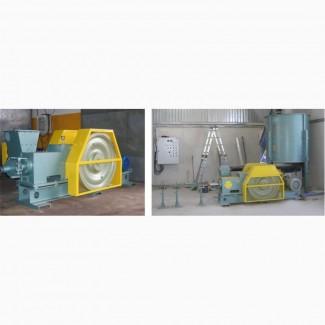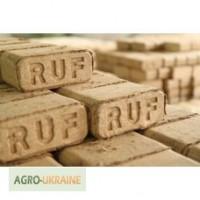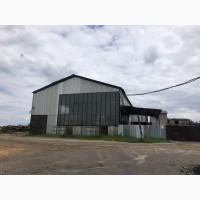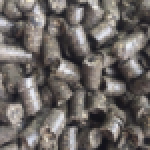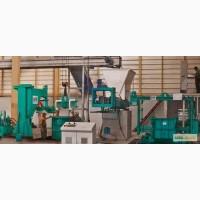Sell / buy
Press for the production of fuel briquettes from biomass mechanical BT-60, Polish, Kharkiv region.
Price18,000$
Region:all of Ukraine,
Харьковская обл.
(Kharkiv)
Updated:
Technical characteristics of BT-60 :
#
Parameter
Ed. change.
Indicators
1
Productivity - sawdust
kg/h
500-700
2
Productivity - straw
kg/h
350-550
3
Productivity - sunflower husks
kg/h
450-550
4
Allowable humidity
%
8-20
5
Density of briquettes
g/cm3
0.8-1.5
6
Briquette diameter (standard version)
mm
60-70
7
Diameter of pellets (granules)
mm
8-22
8
Briquette length (random, adjustable)
mm
25-200
9
Main drive engine power
kW
18.5
10
Engine power of the briquette press worm drive
kW
5.5
11
Type of lubrication of bearings, main shaft, bushings, connecting rod,
-
Coercive
conductor.
grease(//tractor-service.com)
12
Oil type
-
M10G2K
13
Oil volume
dm3
40
14
Oil pressure
mPa
0.6
15
Oil pump type
-
Serrated
16
Lubrication of other elements
-
Plastic lubricant
17
Size - length x width x height
mm
260x950x1100
0
The press is made in the best European traditions of quality.
The mechanical press is used as professional equipment in technological lines with a capacity of 700 kg/hour. The reliable design of the press (crank mechanism) ensures stable production of quality products with low energy consumption.
optimal ratio of productivity - consumed power, competitive price, profitable investments
Briquetting
For the processing of waste obtained in the process of processing wood, processing grain, flax, etc. the waste briquetting technology was developed.
Briquetting is the process of pressing finely ground waste under high pressure without the use of binders. The moisture content of the compressed material should not exceed 15%, and the particle size should not exceed 25 mm. With the help of high pressure and heat, lignin is released from the raw material, which acts as a binder and keeps the briquette in a dense state.
Briquetting technology is used in the processing of wood waste into high-calorie ecological fuel. Processing waste into briquettes solves the problem of storing combustible waste, which is generated during the work of carpentry workshops, sawmills, grain shops, oil shops.
Due to its high consumer properties, the fuel material obtained as a result of briquetting is widely used both in individual households and in industrial heating systems.
Parameter/ Type of briquette waste
Sawdust
Sunflower husk
Stonecoal
Density, t/m³
1.1 - 1.26
1.0 - 1.2
1.2 -1.5
Calorific value, kcal/kg
4000 - 4800
4800 - 5200
4400 - 5200
Moisture, %
6 - 8
4 -7
-
Ash content,%
0.5-1.0
0.35-3.0
10-20
As can be seen from the table, the calorific value of the fuel briquette is close to environmentally friendly fuel.углю, а по зольности в десятки раз ниже его, кроме того, выбросы серы при сжигании брикета практически отсутствуют, что делает его экологически чистым топливом.
Fuel briquettes have a wide range of applications and can be used for all types of furnaces, household and industrial boilers, burn perfectly in fireplaces, stoves, grills, etc. The big advantage of briquettes there is a constant temperature during combustion for 4-8 hours.
#
Parameter
Ed. change.
Indicators
1
Productivity - sawdust
kg/h
500-700
2
Productivity - straw
kg/h
350-550
3
Productivity - sunflower husks
kg/h
450-550
4
Allowable humidity
%
8-20
5
Density of briquettes
g/cm3
0.8-1.5
6
Briquette diameter (standard version)
mm
60-70
7
Diameter of pellets (granules)
mm
8-22
8
Briquette length (random, adjustable)
mm
25-200
9
Main drive engine power
kW
18.5
10
Engine power of the briquette press worm drive
kW
5.5
11
Type of lubrication of bearings, main shaft, bushings, connecting rod,
-
Coercive
conductor.
grease(//tractor-service.com)
12
Oil type
-
M10G2K
13
Oil volume
dm3
40
14
Oil pressure
mPa
0.6
15
Oil pump type
-
Serrated
16
Lubrication of other elements
-
Plastic lubricant
17
Size - length x width x height
mm
260x950x1100
0
The press is made in the best European traditions of quality.
The mechanical press is used as professional equipment in technological lines with a capacity of 700 kg/hour. The reliable design of the press (crank mechanism) ensures stable production of quality products with low energy consumption.
optimal ratio of productivity - consumed power, competitive price, profitable investments
Briquetting
For the processing of waste obtained in the process of processing wood, processing grain, flax, etc. the waste briquetting technology was developed.
Briquetting is the process of pressing finely ground waste under high pressure without the use of binders. The moisture content of the compressed material should not exceed 15%, and the particle size should not exceed 25 mm. With the help of high pressure and heat, lignin is released from the raw material, which acts as a binder and keeps the briquette in a dense state.
Briquetting technology is used in the processing of wood waste into high-calorie ecological fuel. Processing waste into briquettes solves the problem of storing combustible waste, which is generated during the work of carpentry workshops, sawmills, grain shops, oil shops.
Due to its high consumer properties, the fuel material obtained as a result of briquetting is widely used both in individual households and in industrial heating systems.
Parameter/ Type of briquette waste
Sawdust
Sunflower husk
Stonecoal
Density, t/m³
1.1 - 1.26
1.0 - 1.2
1.2 -1.5
Calorific value, kcal/kg
4000 - 4800
4800 - 5200
4400 - 5200
Moisture, %
6 - 8
4 -7
-
Ash content,%
0.5-1.0
0.35-3.0
10-20
As can be seen from the table, the calorific value of the fuel briquette is close to environmentally friendly fuel.углю, а по зольности в десятки раз ниже его, кроме того, выбросы серы при сжигании брикета практически отсутствуют, что делает его экологически чистым топливом.
Fuel briquettes have a wide range of applications and can be used for all types of furnaces, household and industrial boilers, burn perfectly in fireplaces, stoves, grills, etc. The big advantage of briquettes there is a constant temperature during combustion for 4-8 hours.
|
Shop, contacts | |
Oleg / отзывы, инфо. / activity evaluation | |
|
Telephone:
(095xxxxxx
show
| |
| Skype: oleole2010 | |
| http://stankiland.ru/ | |
All ads of the user || |341~3 | |
Ad ID: #402725
(added by a registered user, registration date: 07-01-2015)|| |358
Добавлено / Обновлено: 12-10-2024 12:20 (current, until: 12-10-2025)
Permanent ad address:
Showed / watched for today: ?, total: ?
Similar ads
There are many interesting ones among them...
